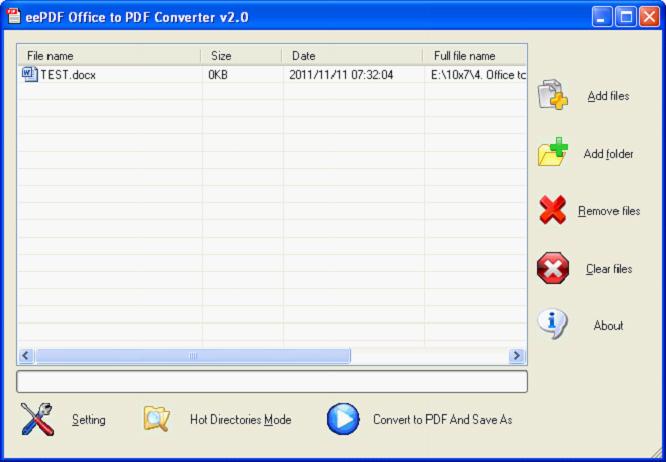

SNewFileName = VBA.Mid(sFileName, 1, VBA.InStrRev(sFileName, ".",, vbTextCompare) - 1) Then the use the PDF export function, so that word can be accessed using that object. In case if you would like to automate this process from Excel or Outlook, then an object for word.application has to be created first. From the word document that needs to be converted to PDF, press Alt + F11, then copy paste the bwlo code.
#Convert pdf to word 2010 docx code
This vba code is written to run as Word document. This option is available only in the higher version of office like 2010, 2013, 2016 etc., This will convert all pages in the docx file to PDF. Proper heading and alignment will be followed along with the page number if you follow the above steps correctly. Note: If your create bookmarks with ‘heading’ not checked in, then your document will not have a perfect heading. Now, Your Word document will be saved as a “PDF” file. Document structure tags for accessibility.Tick these ‘check boxes’ in additional options -> Non-Printing Information section.Choose Save As option from file tab (or accessibility tab or using ALT+F+A).Open Word file to be converted to PDF.Converting Docx to PDF – using VBA to save word to PDF It is the simplest way of converting a word document to PDF. Easy Steps to Convert MS Word Docx to PDF

Now, here are few easy ways to covert Word to PDF format. By converting the Docx to PDF you can avoid the document getting edited by anyone. While sending the important files as a word document, there are chances that it get modified by other user. In order to avoid copying or alteration of information by the third party or unauthorized user, We convert the word document to PDF. When you open a PDF file in Word, Word uses a system of complex rules to figure out what Word objects (like headings, lists, tables, etc.) best represent the original PDF and where to put those objects in the Word document.PDF refers to “Portable Document Format”. But you can’t see those differences when you look at the PDF in a reader. For example, a PDF might contain invisible text, graphics, and images. For example, PDF stores a table as a set of lines without any relationship to the content inside the table cells.ĭifferent programs represent the same content using different structures in PDF files. Most PDFs don’t include information about structural content elements, such as paragraphs, tables, or columns. PDF is a fixed file format, which means the file stores the location of text, pictures, and vector graphics on a page, but not necessarily the relationships among them. If your PDF includes these, you might want to open it directly rather than converting it to a Word document:įont effects, like Glow or Shadow (in the Word file, the effects are represented by graphics) Some elements are known to be problematic when converting from PDF to Word format. Document elements that don’t convert well For example, if Word doesn’t recognize a footnote, it treats the footnote as regular text and might not put it at the bottom of the page. Sometimes, Word doesn’t detect an element, and so the Word version doesn’t match the original PDF file. When that happens, the text can’t be edited. If the PDF contains mostly charts or other graphics, the whole page might show up as an image. But when you open a PDF file in Word, it might not look exactly the way it looked as a PDF. You always have the original PDF file, in case you don't want to keep the version that Word converts.Ĭonverting from PDF to Word works best with files that are mostly text-for example, business, legal, or scientific documents. Word makes a copy of the PDF, converting it to a Word document and attempting to match layout of the original PDF. However, if you want to edit the PDF file, go ahead and open it in Word. To open a PDF file without converting it to a Word document, open the file directly wherever it's stored (for example, double-click the PDF file in your Documents folder).


 0 kommentar(er)
0 kommentar(er)
